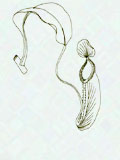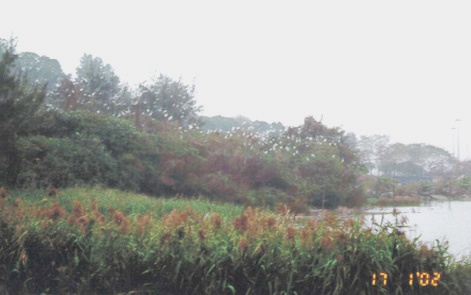

 |
 |
Vertebrates
| A view to a kill - the mythologisation progress in action | |
| Wildlife around the HKU campus? | |
| An Ardeid population of regional importance | |
| Should Hong Kong's freshwater fishes be protected by law? |
An Ardeid population of regional importance
by Leung Va and Kwok Hon Kai
The shallow water between Taipa and Coloane, Macau, was once covered by extensive mangroves. These are now much reduced. At least since 1990, Little Egrets Egretta garzetta, Chinese Pond Herons Ardeola bacchus and Night Herons Nycticorax nycticorax have nested on the mangroves at the southeast of Taipa. This is the only egretry ever reported from Macau. The mangroves on the southeast of Taipa were cleared in 1998, and the ardeids moved to nest in a Casuarina plantation near the Taipa House Museum in 1999. Apart from during the breeding season (March to June), ardeids also roost in this plantation during winter. Hundreds of egrets and herons usually roost in this plantation, and the maximum count was 1,400 birds in January 2002. Almost all roosting birds are Little Egrets. Night Herons are also found roosting on the stumps of cut mangroves in the lagoon. Ardeids that roost in this plantation come from various directions, and possibly travel long distances. This may suggest that other locations in western Ningdingyang may no longer be suitable for roosting. Ardeids, particularly white egrets, are hunted or trapped in the Pearl River Delta (Young & Cha, 1995, Lansdown et al., 2000). The number of ardeids in this roost is indeed of regional importance. The average peak number of Little Egrets in the Deep Bay area, a site of recognized international conservation importance, during the 1990s, was 1,478 (Carey & Young, 1999). The plantation is owned by a private developer and may be removed for a housing development. The egretry could be saved by a land exchange between the private developer and Macauís SAR government.
 |
|
the egretry in Macau |
Bibliography
Carey, G.J. & Young, L. (1999). The importance to waterfowl of the Mai Po Marshes and Inner Deep Bay Ramsar Site. Hong Kong Bird Report 1997: 141-149.
Landsdown, R.V., Mundkur, T. & Young, L. (2000). Herons in East and South-east Asia. In: (Kushlan, J.A. and Hafner, H.). Heron Conservation, pp 73-98, Academic Press, Great Britain.
|
|
P.13 |
|
Porcupine! |
 Copyright © 2000 |